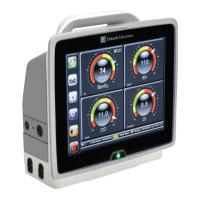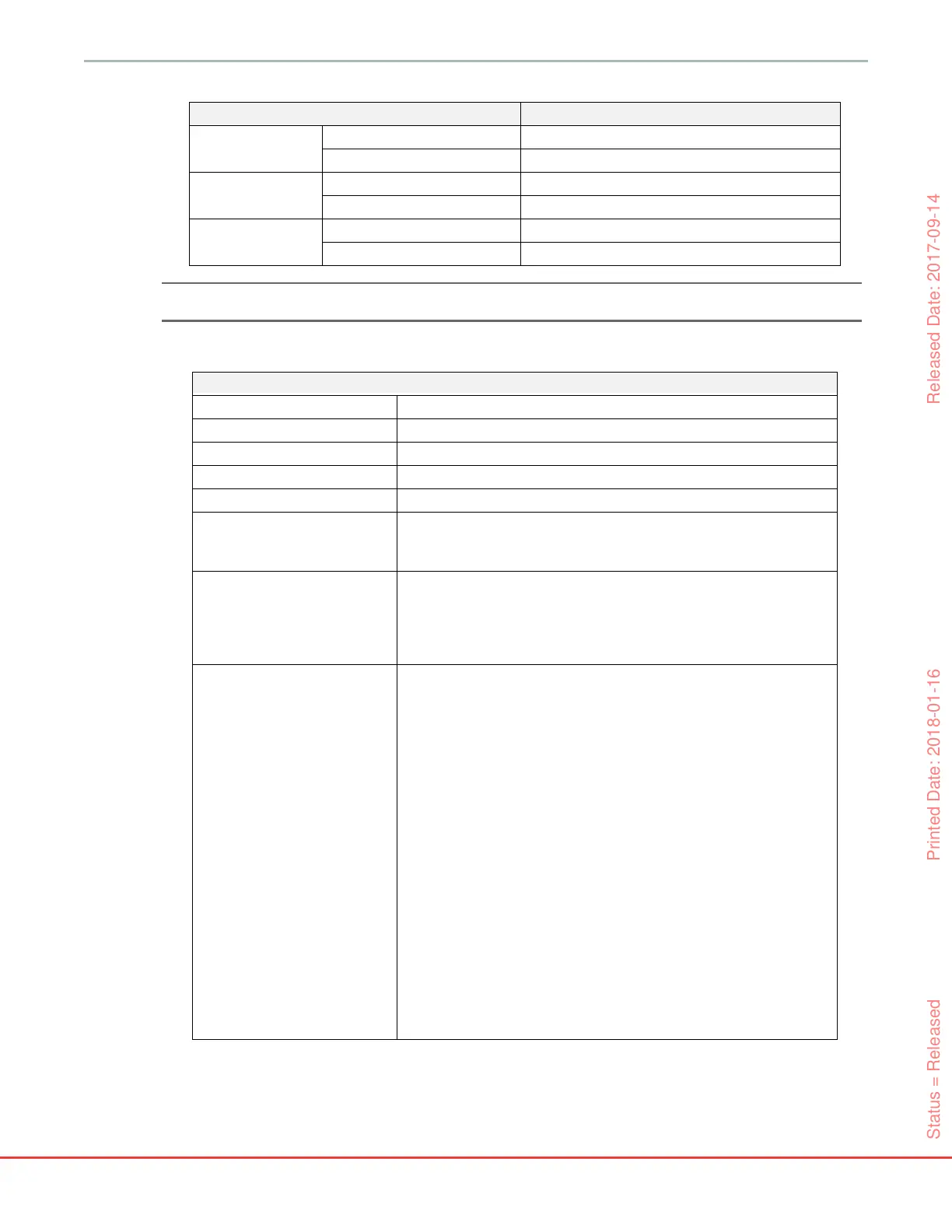191
HemoSphere Advanced Monitor A Specifications
*NOTE Battery capacity starts to degrade with extended exposure above 35 °C.
Table A-3 HemoSphere advanced monitor environmental specifications
Environmental specification Value
Temperature
Operational 10 to 32.5 °C
Non-operational* -18 to 45 °C
Relative humidity
Operational 20 to 90% non-condensing
Non-operational 90% non-condensing at 45 °C
Altitude
Operational 0 to 10,000 feet (3048 m)
Non-operational 0 to 20,000 feet (6096 m)
Table A-4 HemoSphere advanced monitor technical specifications
Input/Output
Touch screen Projective capacitive touch
RS-232 serial port (1) Edwards proprietary protocol; Maximum data rate = 57.6 kilo baud
USB ports (2) one USB 2.0 (rear) and one USB 3.0 (side)
RJ-45 Ethernet port One
HDMI port One
Analog inputs (2) Input voltage range: 0 to 10V; Selectable full-scale: 0 to 1V, 0 to 5V,
0 to 10V; >100 k
Ω input impedance; 1/8 in. stereo jack; Bandwidth: 0
to 5.2 Hz; Resolution: 12 bits ±1 LSB of full scale
Pressure output (1) DPT pressure out signal is compatible with monitors and
accessories intended to interface with Edwards invasive pressure
transducers
Post-zero minimum patient monitor display range:-20 mmHg to 270
mmHg
ECG monitor input ECG sync line conversion from ECG signal: 1V/mV; Input voltage
range ±10V full scale; Resolution = ±1 BPM; Accuracy = ±10% or 5
BPM of the input, whichever is greater; Range = 30 to 200 BPM; 1/4
in. stereo jack, tip at positive polarity; analog cable
Pacemaker pulse rejection capabilities. Instrument rejects all
pacemaker pulses having amplitudes from ±2 mV to ±5 mV
(assumes 1V/mV ECG sync line conversion) and pulse widths from
0.1 ms to 5.0 ms, both with normal and ineffective pacing.
Pacemaker pulses with overshoot of ≤7% of pulse amplitude
(Method A of EN 60601-2-27:2014, subclause 201.12.1.101.13) and
overshoot time constants from 4 ms to 100 ms are rejected.
Maximum T-wave rejection capability. Maximum T-wave
amplitude that can be rejected by instrument: 1.0 mV (assumes 1V/
mV ECG sync line conversion).
Irregular Rhythm. Figure 201.101 of EN 60601-2-27:2014.
* Complex A1: Ventricular bigeminy, system displays 80 BPM
* Complex A2: Slow alternating ventricular bigeminy, system
displays 60 BPM
* Complex A3: Rapid alternating ventricular bigeminy, system
displays 60 BPM
* Complex A4: Bidirectional systoles, system displays 104 BPM
Status = Released Printed Date: 2018-01-16 Released Date: 2017-09-14

